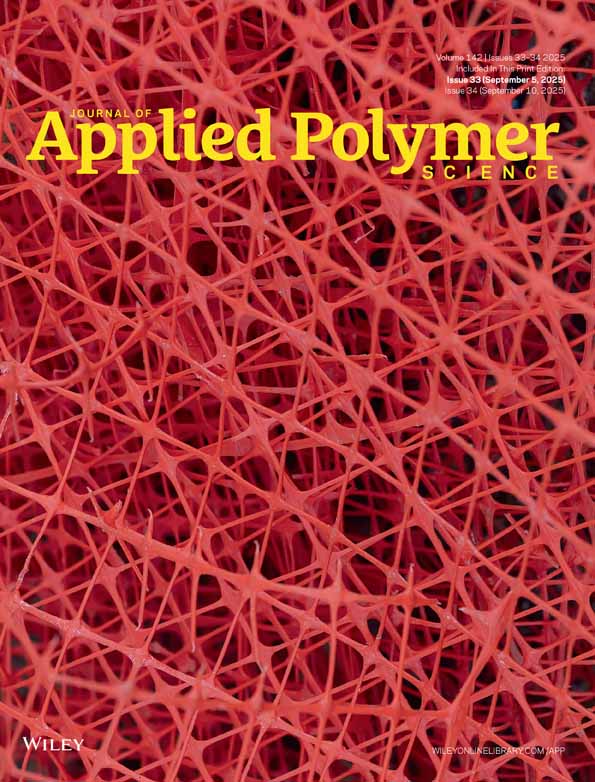Effect of the processing parameters on the surface resistivity of acrylonitrile–butadiene rubber/multiwalled carbon nanotube nanocomposites
Abstract
In this study, acrylonitrile–butadiene rubber (NBR) was melt-mixed with multiwalled carbon nanotubes (MWCNTs). Because the electrical conductivity and mechanical properties of composites are strongly influenced by the filler's state of dispersion and the extent of filler breakage during processing, the processing conditions are very important parameters. The effects of the mixing time, rotor speed, cooling rate, and sulfur concentration on the surface resistivity were investigated. Increasing the rotor speed from 20 to 60 rpm at mixing times of 15 and 30 min led to an increase in the surface resistivity from around 104 to 1011 Ω/square. However, at a mixing time of 7 min, the surface resistivity slightly decreased with increasing rotor speed. When slow cooling was applied, a surface resistivity of 104 Ω/square was obtained at around 2-phr MWCNTs. However, when the fast cooling was applied, a surface resistivity of 106 Ω/square was obtained at 5-phr MWCNTs. The tensile strength and tensile modulus at 300% elongation were improved with the addition of MWCNTs into NBR. © 2009 Wiley Periodicals, Inc. J Appl Polym Sci, 2010




